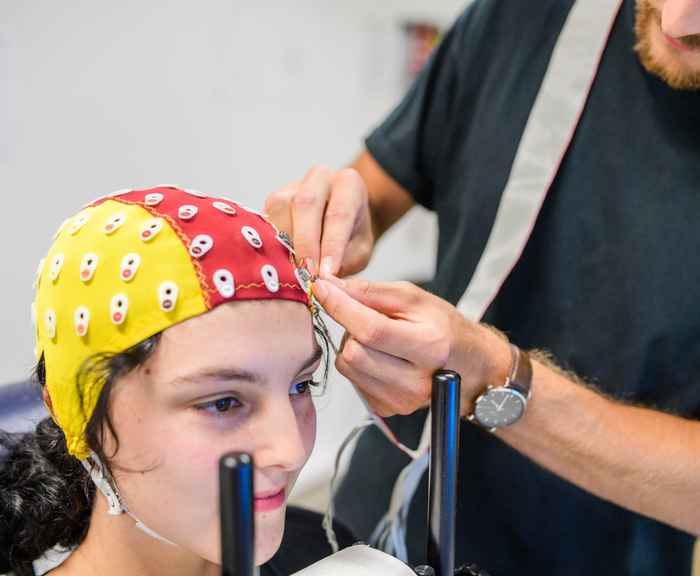Participate in EEG research

What to expect during an EEG experiment
An EEG examination usually proceeds as follows. You take a seat in a chair in a separate room. Then the EEG cap is slid over your head. In order to measure the electrical signal as accurately as possible, a small amount of conductive gel is then applied to each electrode location. After this, the electrodes are actually attached to the cap. For the examination it is often important that you move your eyes as little as possible. In order to check if this is successful enough, some electrodes are applied around your eyes using stickers. Finally, two small electrodes are applied to your ears. These electrodes serve as a reference for the signal. The next step is to check whether all the electrodes give a good signal. After this, the actual experiment can begin.
During the measurements, the door of the room is closed, but not locked. The researcher can see you through a video camera and talk to you through an intercom. Sometimes during the research, for strictly scientific purposes, video and/or audio recordings are made. The researcher will always inform you about this well before participation.
After the experiment you will have the opportunity to flush the conductive gel out of your hair. All facilities for this will be taken care of.
What is expected from you during an EEG experiment
How to prepare for an EEG experiment
You don't have to prepare anything for an EEG examination. However, you may be asked to remove piercings or earrings during the examination in order to avoid interference with the EEG signal.
Can I participate in EEG experiments?
In principle, anyone can participate in EEG experiments. Always take a close look at which target group is being sought for the research for which you are registering, and whether you belong to that target group.